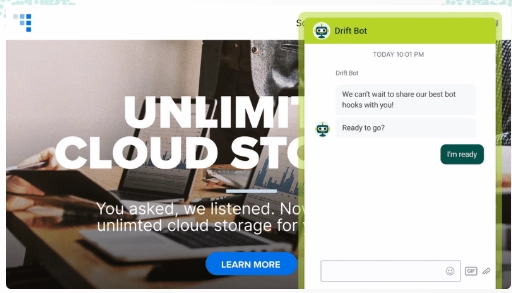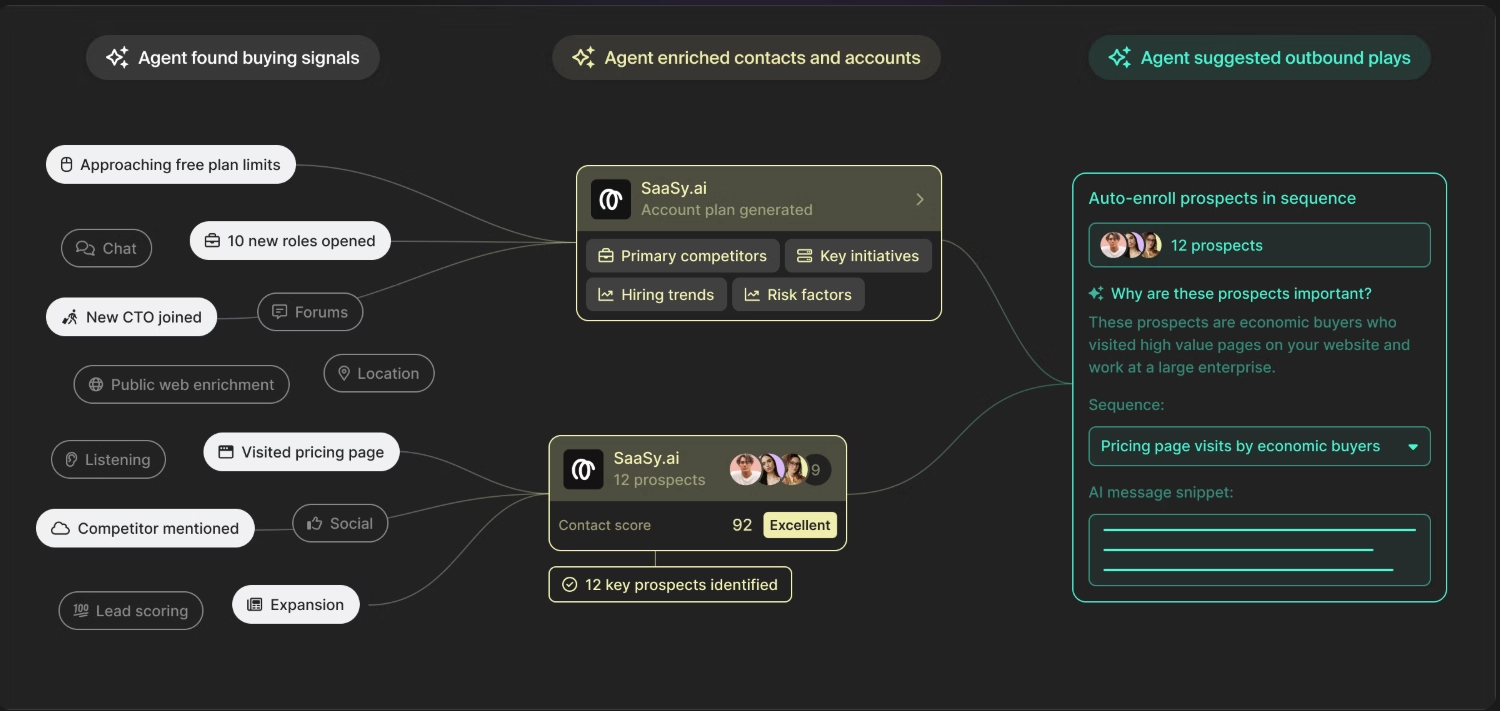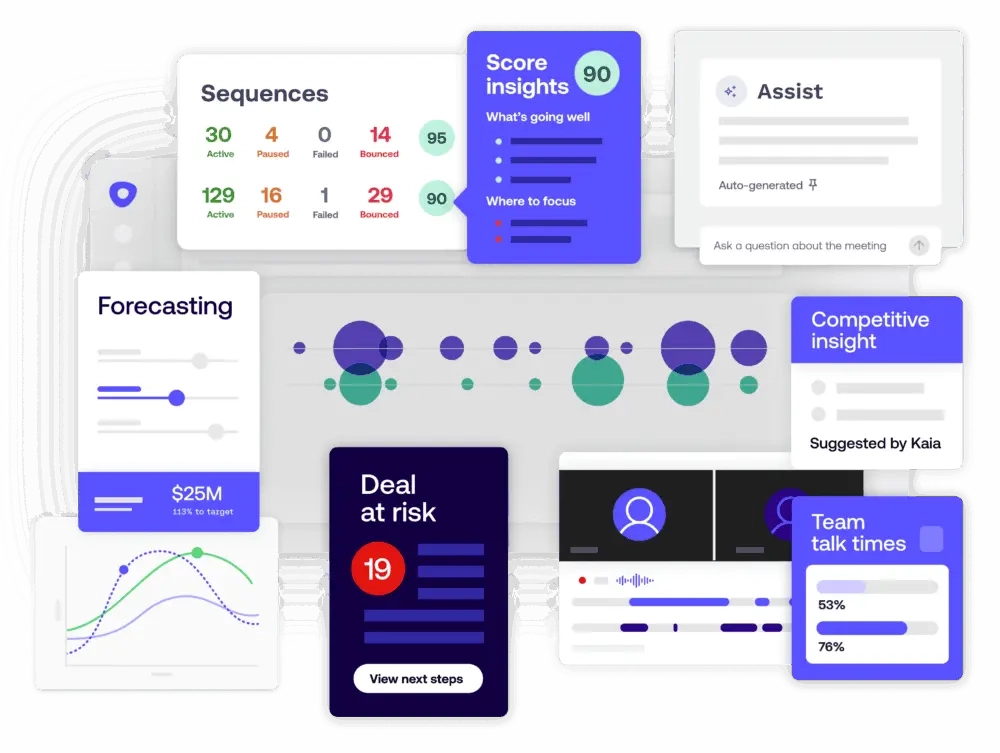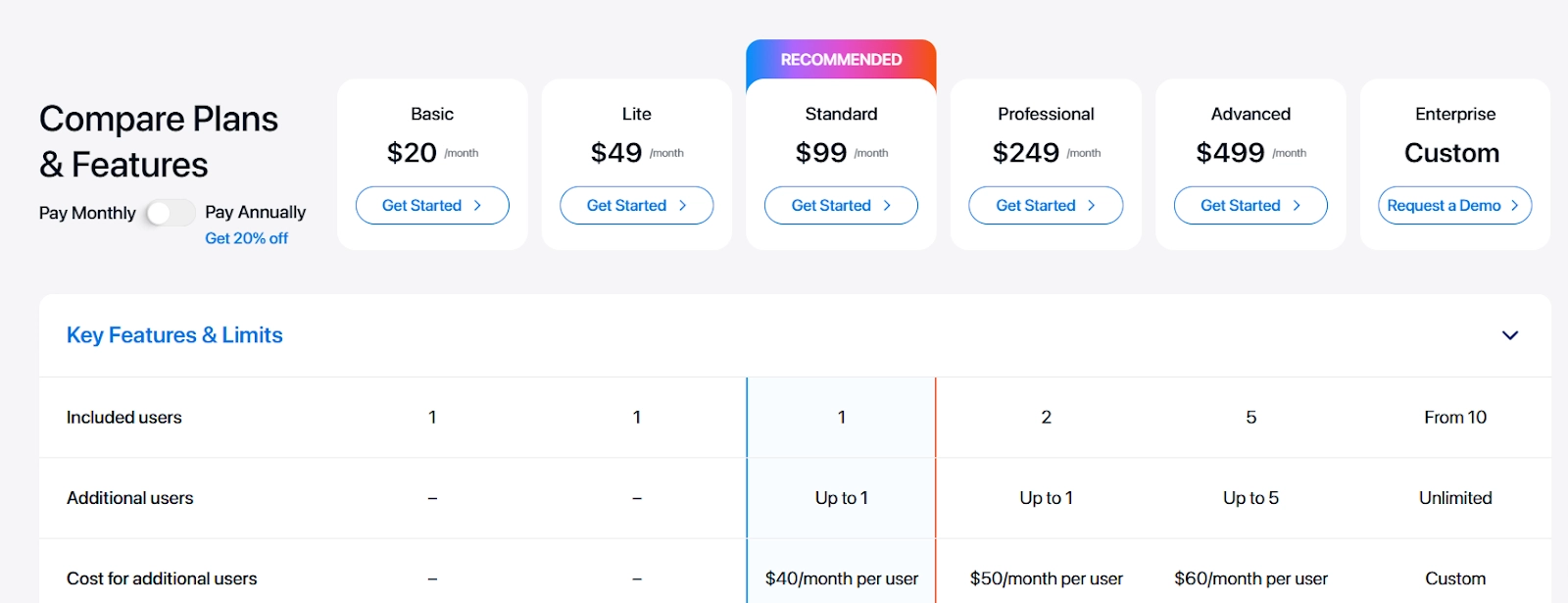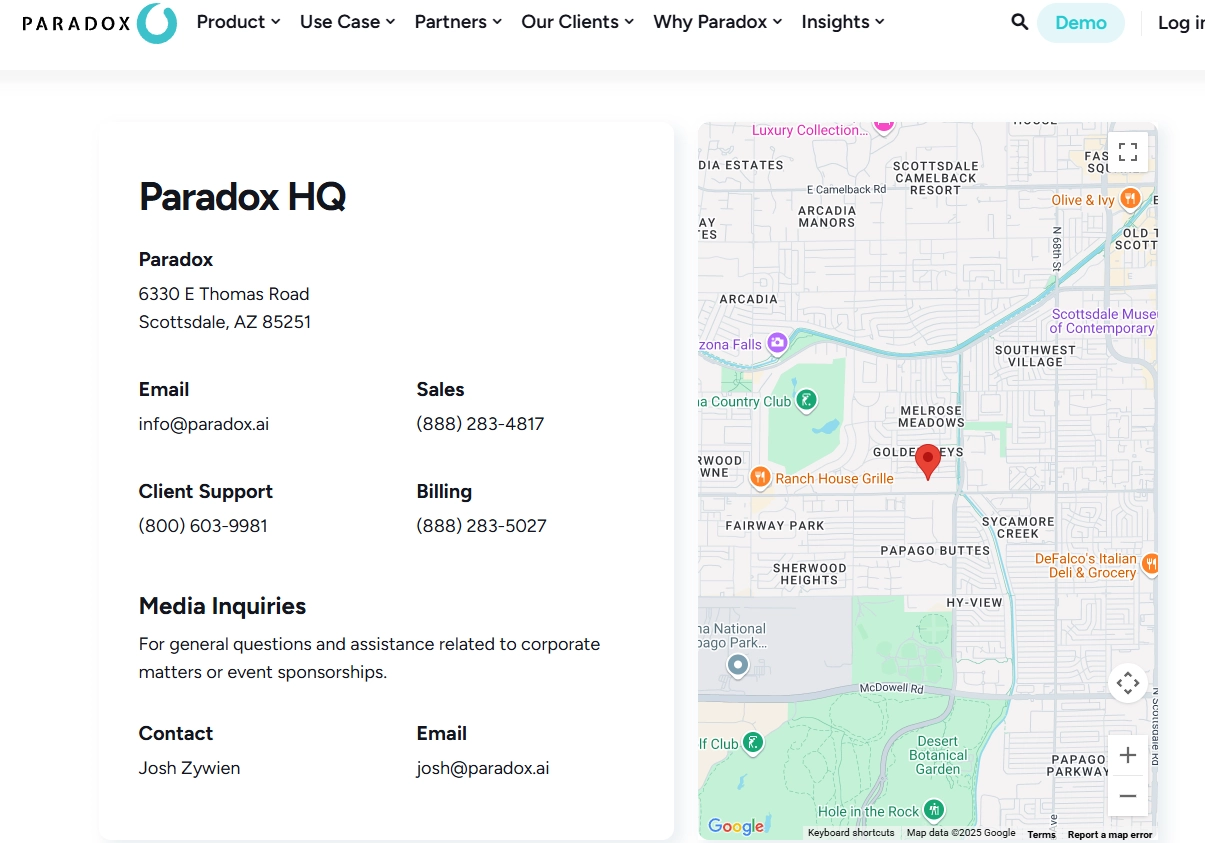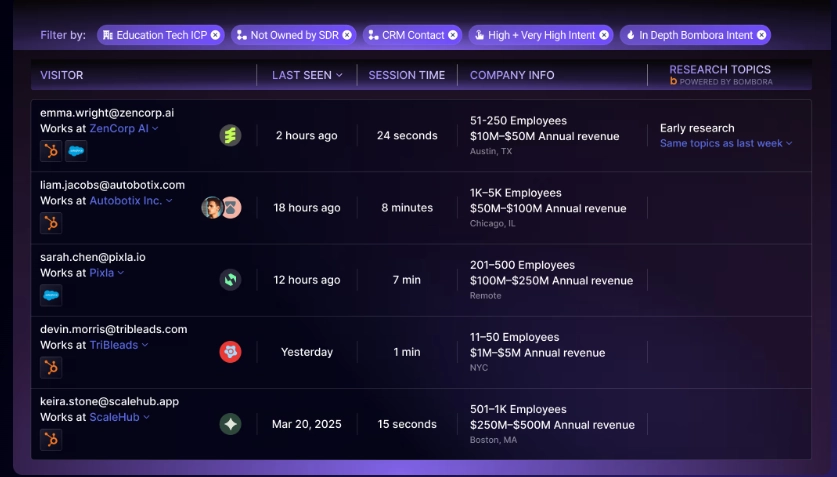
AI For Performance Marketing: Best Practices & Software In 2025
AI is changing how performance marketing works, and at lightning speed.
In 2025, the best teams aren’t relying on gut instinct. They’re using AI to test creatives, adjust bids, and optimize campaigns automatically.
This way, instead of guessing what drives results, you can see what’s actually working in real time.
From ad copy generation to audience targeting and budget allocation, AI gives you the power to move faster and get more from every dollar spent.
In this guide, I’ll walk you through the most effective ways to use AI for performance marketing, the best tools to consider, and how to make it all work in your stack.
Simple, clear, and ready to use.
How is AI used to transform performance marketing in 2025?
Performance marketers are using AI to move faster, spend smarter, and drive better results without guessing what’s working.
AI is helping teams automate the messy stuff (like ad testing and budget allocation), personalize campaigns at scale, and make smarter decisions in real-time.
And instead of digging through dashboards, marketers can see what’s performing - and why - in just a few clicks.
AI is also changing how campaigns are run.
It’s not just a tool, as it’s becoming the real power engine behind creative testing, audience targeting, bidding, and measurement.
The result? More impact with less effort.
And this is just the beginning.
What are the benefits of using AI in performance marketing?
The benefits of using AI in performance marketing are big, and they’re growing fast.
Some of the most notable advantages teams are noticing include:
- Faster decisions - No more waiting for reports. AI gives you real-time insights so you can adjust campaigns on the fly.
- Smarter targeting - AI finds the right audience segments based on real behavior, not guesswork.
- Better creative performance - Lets you quickly test what visuals, copy, and headlines work best without endless back-and-forth.
- Higher ROI - Automates budget shifts and bidding to get the most value out of every dollar.
- Less manual work - AI handles the repetitive stuff, like reporting, segmentation, and optimization, so teams can focus on strategy.
- Stronger attribution - Helps you understand what’s actually driving results, not just what looks good on a dashboard.
- Predictive power - Allows you to spot what’s likely to work next before the competition does.
AI vs. no AI in performance marketing
| With AI | Without AI | |
|---|---|---|
| Decision-making | Real-time insights and auto-optimization. | Delayed, manual adjustments. |
| Targeting | Behavior-based, dynamic segments. | Basic demographic targeting. |
| Creative testing | Automated testing and iteration. | Manual A/B testing, slower feedback loops. |
| Budget allocation | Automatically shifts spend to top-performing campaigns. | Requires constant monitoring and manual changes. |
| Attribution | Multi-touch, data-driven clarity. | Last-click bias, hard to track the full journey. |
| Time spent | Focus on strategy, not spreadsheets. | Teams buried in dashboards and reports. |
| Scalability | Easy to scale across channels and audiences. | Scaling means more manual work and coordination. |
| Results | Higher efficiency, stronger ROAS. | Inconsistent results, wasted ad spend. |
9 ways that you can use AI for performance marketing
So, that’s the big picture. But how does it play out day to day?
Below, we’ll take a closer look at the most effective ways teams are using AI to improve their performance marketing.
From how you target and personalize to how you manage spend and measure success, each use case is a step toward more efficient, data-driven campaigns.
Let’s dive in!
1. Intent-based ad targeting
One of the biggest challenges in performance marketing is knowing who to target and when.
Most ad platforms rely on broad demographic or interest-based data, which can be hit or miss.
As a result, you might be spending thousands showing ads to people who just aren’t ready to buy.
That’s where intent-based targeting comes in.
Instead of relying on surface-level traits, AI helps you track real behavioral and buyer intent signals, such as:
- Which pages on your website someone visited?
- What content did they engage with?
- Whether they’re researching your competitors.
These signals paint a clearer picture of buyer intent and help you build smarter audience segments based on real-time activity, not assumptions.
But it doesn’t end there.
Once those signals are captured, AI can automatically sort and sync those audiences into your ad platforms, so your campaigns reach the people who are most likely to convert, right when they’re interested.

This is exactly what Warmly’s Demand Gen agent makes possible.
It monitors onsite and offsite behaviour, de-anonymizes visitors, and builds high-intent lead segments that connect directly to your ad channels - from Meta to Google Ads and beyond.
That means every dollar you spend on your paid channels goes toward reaching the right accounts with the right message, every single time.
2. Personalized pop-ups
While website pop-ups can technically drive engagement and conversions, most of them are annoying, to say the least.
They interrupt the user journey, show irrelevant offers, and feed the same message to everyone, no matter who they are or what they’re doing.
And when every visitor sees the same generic CTA, conversions suffer.
AI changes that make pop-ups smarter and way more effective.
Instead of blasting the same message to every visitor, AI helps you detect who is on your site, what they’re doing, and where they are in their journey.
Then it delivers tailored offers or messages that feel timely, helpful, and relevant, not pushy.
This kind of personalization boosts conversion rates because it speaks directly to what each visitor cares about at that very moment, whether it’s a discount, a demo, or a helpful resource.
Warmly makes this easy with its dynamic on-site offers.

It identifies visitors by company, behavior, and intent, then automatically serves real-time pop-ups tailored to their interests - no code or extra design work required.
So instead of generic CTAs, you show high-converting, personalized offers that match each lead’s unique journey, increasing click-through and conversion rates.
3. Advanced attribution and performance clarity
Another big headache in performance marketing is figuring out what actually worked.
Ad platforms, email tools, and any other channel you use all report in isolation, and each one takes full credit.
So while your reports may look great on paper, your actual pipeline tells a different story.
This disconnect makes it hard to know where to invest, what to scale, and what’s just noise.
AI-powered attribution changes that.
Instead of tracking surface-level metrics like clicks or impressions, AI looks at the full journey across channels, devices, and touchpoints.
It helps marketers understand how different actions contribute to pipeline, not just vanity metrics.
And it does it all in real-time, so you can adjust before money gets wasted.
That’s where tools like Warmly step in.
It unifies your campaign data across all ads, SEO, outbound, and more, giving you one clear view of what’s driving results.

You’ll see the actual pipeline each channel contributed to, how leads moved through each stage, and which touchpoints actually mattered.
As a result, you get clean and credible insight you can trust.
4. Smarter audience insights and more precise segmentation
One-size-fits-all targeting just doesn’t cut it anymore. Today’s buyers expect relevance and fast.
But most marketers still rely on outdated segments built from static lists or basic firmographic filters.
AI allows you to go deeper.
By combining real-time B2B data with contextual signals, like job changes, social activity, or competitor research, you can build much more accurate audience segments.
These aren’t just based on who someone is, but what they’re doing right now and why they might be in-market.
This lets you tailor your campaigns not just by persona, but by real-time buying context, resulting in better engagement, stronger pipeline, and higher conversion rates.
Warmly makes this possible by unifying person-level intent signals across three sources:
- First-party - Onsite behavior, product usage data, chat interaction, CRM data.
- Second-party - Social media activity, new hires, job changes.
- Third-party - Keyword research, competitor research, and lookalike tracking.

This gives you a live, detailed view of who’s in your market, and lets you segment audiences dynamically based on what they’re showing interest in.
As a result, you’re always speaking to the right people, with the right message, at the right time.
5. Predictive analytics and modelling
Performance marketing isn’t just about reacting to what has already happened.
It’s also about staying one step ahead.
But without the right tools, spotting patterns and predicting future behavior is nearly impossible.
That’s where AI-powered predictive analytics comes in.
By analyzing past behaviors, campaign outcomes, and customer journeys, AI can forecast what’s likely to happen next. For example:
- It can tell you which leads are most likely to convert based on how similar they are to your highest-value customers.
- It can flag accounts that are showing early signs of churn, like a drop in engagement or skipped steps in the funnel.
- It can predict when certain segments are likely to be most responsive, helping you time your campaigns for maximum impact.
- It can assess what kind of content or messaging is most likely to resonate with a certain lead segment based on previous engagement and conversion rates, etc.

These insights let marketers get proactive.
You can prioritize the right audiences, time your campaigns more effectively, and tailor your message to meet prospects exactly where they are before they even show interest.
Let’s say you’re running a B2B SaaS campaign and targeting mid-market finance teams.
Predictive models might surface that prospects who attend a webinar and visit your pricing page twice within a week are 4x more likely to request a demo.
With that insight, you can automatically prioritize similar accounts and tailor follow-ups to move them faster through the funnel.
This means fewer missed opportunities, more timely outreach, and smarter resource allocation, all driven by data that actually knows what’s coming.
6. Hyper-personalization at scale
Performance marketing works best when it feels personal.
But tailoring every ad, landing page, and offer to each audience segment - let alone individual users - used to be nearly impossible at scale.
AI changes that.
By analyzing real-time behavior, past site activity, industry, location, and more, AI can automatically generate ad creatives, headlines, and landing page content that adapts to the person seeing it.

No more static campaigns. Everything adjusts dynamically based on who’s engaging.
For example, an AI model might recognize that a visitor is from a fintech company browsing on mobile and has previously clicked on competitor comparison pages.
Based on that, it could serve as an ad that highlights the speed and compliance of your product, followed by a mobile-optimized landing page tailored to financial services pain points.
This level of customization used to require hours of manual segmentation and creative work.
Now, with AI, it’s automatic, so you can run personalized, high-converting campaigns across channels without slowing down.
7. Generating ad creatives on scale
Creating effective ad creatives has always been a balancing act between speed, quality, and performance.
Designing multiple versions, testing different headlines, and tweaking visuals all take time.
And even then, you’re often guessing what will actually resonate.
AI changes that help marketers generate, test, and optimize ad creatives at scale.
Using real performance data, AI tools can suggest or even create high-converting headlines, visuals, CTAs, and layouts faster than any human team ever could.

Let’s say you’re launching a product-focused campaign.
Instead of spending days designing three ad variants, AI can generate dozens, each with slight variations in copy, imagery, or tone, and test them simultaneously to see what works best.
From there, it automatically promotes top performers and pauses underperformers.
This helps marketers move faster, run more experiments, and cut the guesswork.
For example, one marketer on LinkedIn shared how they use AI to instantly create high-quality visuals, generate avatars, and even turn casual photos into polished ad-ready graphics, all within minutes.

With tools like DALL·E, HeyGen, and others, marketers are producing studio-quality visuals without relying on design teams, speeding up campaign launches and scaling creative output with ease.
The best part is that AI doesn’t just speed up creative production. It makes it easier to test and scale what works, without sacrificing quality.
8. Automated bid and budget optimization
Managing bids and budgets manually across platforms is slow, messy, and often reactive.
You’re constantly checking performance, adjusting spend, and trying to figure out if your money is going to the right places.
And by the time you catch what’s underperforming, you’ve already lost budget.
AI fixes this by monitoring campaign performance in real-time and automatically adjusting bids and budgets based on what’s actually working.

It can increase spend on high-performing audiences, pull back on underperformers, and rebalance your budget across channels to get the best return.
Let’s say your Google Ads campaign is crushing it on mobile but struggling on desktop.
AI can spot that trend instantly and shift your spend accordingly without you lifting a finger.
The same goes for different time zones, audience segments, or ad creatives.
This leads to spending much smarter, as every dollar is optimized in the moment, giving you more control and better results with less manual work.
9. Contextual and cookieless targeting
As privacy regulations tighten and third-party cookies fade out, marketers are facing a new challenge: how to reach the right audience without relying on personal tracking data.
That’s where AI-powered contextual targeting steps in.
Instead of following users around the internet, it analyzes the environment they’re in - the content of the page, keywords, tone, even visual elements - to match ads with the most relevant context.
For example, if someone is reading an article about remote team productivity, AI can detect that topic and serve an ad for collaboration software, without knowing anything about the user.
It’s privacy-friendly, future-proof, and surprisingly effective.
AI makes this smarter by recognizing patterns and relationships humans might miss.
It understands not just keywords, but meaning, so your ads land in the right place, at the right moment, even without cookies.
In a cookieless world, relevance wins.
And contextual targeting powered by AI can help you stay visible, compliant, and high-performing.
5 best AI-powered performance marketing tools in 2025
We’ve looked at how AI is reshaping performance marketing, but to put it all into action, you need the right tools.
Here are five of the best AI-powered platforms performance marketers are using in 2025 to optimize campaigns, scale creative, personalize experiences, and track what’s really driving pipeline.
| Tool | Best For | Pricing |
|---|---|---|
| Warmly | Identifying high-intent leads, segmenting audiences, syncing to ads & outreach | Free plan for up to 500 visitors; Data Only: $599/mo; Business: from $19K/year; Enterprise: Custom. |
| Omneky | Generating and scaling ad creatives across platforms. | Pro: $99/mo; Pro + Insights: $398/mo; Enterprise: Custom; 7-day free trial included. |
| Mutiny | Personalizing landing pages and website experiences | Pricing not public - contact sales for a demo and a quote |
| Adext.ai | Automated bidding and micro-segment optimization on Google & Meta | Starter: $16.59/mo + 6% ad spend; Venture: $99/mo + 4%; Core: $299/mo + 2%; Enterprise: Custom |
| Metadata.io | Full-funnel paid campaign orchestration and optimization | Pricing not public - request a free trial or contact sales for details |
1. Warmly

Warmly is a marketing platform built to turn anonymous website traffic into pipeline through sophisticated AI functionality.
It helps marketers identify high-intent visitors, segment them based on real-time signals, and sync those segments into ad platforms and outreach tools automatically.
By combining person-level intent data with smart targeting and attribution, Warmly gives you full control over who you engage, when, and how.
Standout features

- Signal-based segmentation - Tracks first, second, and third-party buying signals to build dynamic ad audiences that actually convert.
- On-site personalization - Deploys targeted popups and offers based on visitor behavior, company, and funnel stage.
- Advanced attribution - Maps campaign influence across the funnel so you know exactly what’s driving pipeline, not just clicks.
- Hyper-targeted ads - Pushes warm, qualified leads directly into ad audiences, helping you reduce TOFU spend and boost ROAS.
- AI Orchestrator - Automatically launches LinkedIn and email outreach to warm leads, accelerating handoff to sales without manual work.
Try it yourself 👇or watch it in action.
- Agentic AI - A wide range of AI agents that autonomously handle sales, marketing, and demand generation campaigns.
Pricing
Warmly offers a free forever plan that allows you to reveal up to 500 monthly visitors, set up ICP filters to quickly identify high-quality leads, and automate basic lead routing.
If you need more, there are three tiers to choose from:
- Data Only: Starts at $599/mo when billed monthly or $5,000 when billed annually, lets you identify up to 5,000 monthly visitors, first-party intent signals, alerts, and access to Warmly’s B2B prospecting database.
- Business: Starts at $19,000/year for up to 10,000 visitors or $45,000/year for up to 75,000 visitors, everything in Data Only, plus third and second-party signals, sales orchestration, AI Chat, and lead routing.
- Enterprise: Custom pricing, custom number of visitors, everything in Business, plus custom signals and warm calling.

2. Omneky

Omneky is a generative AI platform built specifically for performance advertisers who need fresh, high-converting creatives at scale.
By integrating with your brand assets and performance data, Omneky automatically generates, tests, and launches ad variations across channels, making creative bottlenecks a thing of the past.
Standout features

- AI-powered creative generation - Uses your brand visuals and data insights to build polished ad graphics, headlines, and copy at scale.
- Brand LLM - Ensures every asset respects your brand’s voice, style, and visual identity.
- Creative analytics engine - Analyzes visual and copy elements to highlight top-performing variations and guide future creative decisions.
Pricing
Omneky has three pricing plans:
- Creative Generation Pro: $99/mo, includes AI product image and video generation, brand voice consistency with brand LLM, AI campaign brief, AI brand rules, etc.
- Creative Generation Pro + Insights: $398/mo, includes everything in Creative Generation Pro, plus insights-powered automated ads, AI creative insights and recommendations (Meta only), insight-enhanced campaign briefs, etc.
- Enterprise: Custom pricing, includes everything in Creative Generation Pro + Insights, plus omnichannel budget recommendations, omnichannel predictive analytics, custom fine-tuning of AI models based on 1P data, etc.

The first two plans come with a 7-day free trial.
3. Mutiny

Mutiny is a no-code AI platform that helps performance marketing teams personalize website experiences at scale.
It's built for B2B brands looking to deliver account-level or firmographic-based messaging, instantly adapting headlines, CTA buttons, visuals, and page layouts to each visitor’s profile.
Standout features

- 1:1 microsites at scale - Automatically generates customized landing pages for high-value accounts using AI-based theming and content adaptation.
- AI copy suggestions - Get tailored headlines and messaging prompts based on audience segment, saving time and boosting relevance.
- Real-time performance insights - Lets you test variants with automatic hold-outs and track engagement, pipeline, and conversion lift by segment.
Pricing
Mutiny doesn’t disclose product prices.
You’ll have to book a demo or contact its team to get more details.

4. Adext.ai

Adext.ai is a smart ad-tech platform that takes the hard work out of audience targeting and budget optimization across Google and Facebook campaigns.
Its AI engine continuously analyzes performance data by the hour, reallocates spend to the best segments, and improves conversion efficiency, all without manual checks.
Standout features

- Budget automation - Adjusts bids and shifts budget hourly to optimize CPA, ROAS, and conversion goals.
- Dynamic audience discovery - Automatically tests and finds the highest-performing micro-segments within your target audience.
- Predictive modelling - Uses machine learning to forecast conversion potential and prioritize segments likely to drive results.
Pricing
Adext has four pricing plans:
- Starter: $16.59/mo plus 6% of the ad spend you invest through the platform every month, includes AI tools and ML models, unlimited smart campaigns, campaign optimization lite, etc.
- Venture: $99/mo plus 4% of the ad spend you invest through the platform every month, includes everything in Starter, plus 2 Facebook or Google Ad accounts, extended campaign optimization, etc.
- Core: $299/mo plus 2% of the ad spend you invest through the platform every month, includes everything in Venture, plus unlimited Facebook or Google Ad accounts, unlimited campaign spend, and more support options.
- Enterprise: Custom price, includes everything in Core, plus exclusive features & multi-users and more support options.

5. Metadata.io

Metadata.io is an AI-powered marketing operating system built to automate B2B paid campaigns end-to-end.
It acts as your ad team’s AI assistant, building audiences, launching ads, optimizing spend, and reporting on true pipeline impact without constant manual oversight.
Standout features

- End-to-end campaign orchestration - Automatically adjusts bids and budgets across LinkedIn, Google, Meta, Reddit, and more, cutting cost-per-lead while increasing volume.
- Creative agent - Helps you quickly create and optimize ad copy and visuals that convert, at scale.
- Analyst agent insights - Provides real-time, AI-generated performance reports, highlighting trends, channel efficiency, and budget recommendations.
Pricing
Metadata.io doesn’t publish its prices.
You can request a free trial or contact its sales for more information.

AI x performance marketing case study
For performance marketers, every ad dollar needs to do real work.
That’s exactly why StraightIn, a LinkedIn marketing agency, turned to AI.
They were already driving solid traffic through social, email, and organic campaigns.
But they couldn’t see who was on their site, or which visitors were actually in-market.
That made campaign targeting messy, generic, and expensive.
With Warmly, that changed fast.
They used Warmly’s AI to deanonymize website visitors, track real-time behavior, and segment leads based on job title, company size, and industry.
This way, instead of blasting generic ads or wasting time on top-of-funnel spend, they were able to build precise, warm audiences synced directly to LinkedIn Ads and email sequences.
The results?
- $10K in revenue closed within 2 weeks.
- Higher click-through and open rates across targeted email campaigns.
- Reduced LinkedIn Ad spend, while increasing engagement and efficiency.
With Warmly’s AI engine, StraightIn was able to focus its performance marketing efforts on the leads that mattered - those already showing intent.
No waiting for form fills. No wasted impressions.
Just data-backed targeting, faster conversions, and a smarter use of budget.
What have AI’s challenges been in performance marketing?

AI’s challenges in performance marketing have mostly revolved around the practical realities of using it effectively.
Some of the biggest obstacles to successful AI implementation that marketers face include:
- Poor data quality - If the input data is messy, outdated, or incomplete, AI can’t make smart decisions, leading to bad targeting and wasted spend.
- Lack of transparency - Many AI tools act like black boxes, offering little visibility into why certain decisions are made. That makes it hard to optimize or trust the results.
- Over-reliance on automation - Letting AI run too much on autopilot can sideline human judgment and creativity, which are the two things performance marketing still needs to win.
- Privacy limitations - With cookies disappearing and stricter regulations in place, marketers must balance personalization with compliance without the tracking tools they used to rely on.
- Learning curve and setup effort - AI tools aren’t plug-and-play. They require thoughtful onboarding, testing, and tuning to actually deliver results.
FAQ
1. Why use AI in performance marketing in the first place?
Because speed, scale, and precision matter.
AI helps performance marketers automate the tedious parts, like audience targeting, creative testing, and bid adjustments, so they can focus on what really moves the needle.
It enables faster decisions, more relevant campaigns, and clearer insight into what’s actually driving results.
2. Are there any statistics backing up AI’s usefulness in performance marketing?
Yes - and they’re hard to ignore.
For example:
- Companies using AI in marketing and sales see 3–15% higher revenue and 10–20% better ROI .
- 84% of generative‑AI users said it helped improve campaign speed and personalization, boosting conversion rates.
- 73% of marketers say AI plays a significant role in creating hyper-personalized customer experiences.
- 83% of marketers admit that AI frees up their time so they can focus on more strategic or creative aspects of their roles.
- 41% of companies say that the top benefit of implementing AI is improved customer experience.
Next steps: Elevate your performance marketing with AI that actually performs
AI has already become the engine powering smarter targeting, better attribution, and faster optimization.
From hyper-personalized ad experiences to autonomous campaign orchestration, AI lets marketers focus less on guesswork and more on what drives revenue.
But results don’t come from AI alone.
They come from choosing the right tools and putting them to work across your stack.
That’s where Warmly comes in.
If you want to turn anonymous traffic into a high-intent pipeline, reduce wasted ad spend, and orchestrate personalized outreach at scale, Warmly gives you the visibility and automation to do it.
Book a demo today and find out how Warmly helps performance marketers turn engagement into real revenue.
Read more
- AI in B2B Marketing: How To Use It? [2025] - Discover how top B2B teams are using AI to personalize, optimize, and scale their marketing strategies.
- AI Marketing Agents: Use Cases and Top Tools for 2025 - Meet the AI agents transforming everything from campaign planning to execution, with no human micromanaging required.
- 8 Examples of AI Marketing Automation in 2025 - Get inspired by real-world examples of AI streamlining campaigns, boosting ROI, and freeing up creative time.
- 10 Best AI Marketing Tools for B2B Teams [2025] - From lead gen to content creation, these tools are powering the smartest B2B marketing teams today.
- AI for Marketing: Best Practices & Software in 2025 - Learn how to harness AI responsibly and effectively across your entire marketing funnel.
- How To Use AI In Account-Based Marketing [2025] - See how AI is redefining ABM with better targeting, faster personalization, and stronger alignment with sales.









